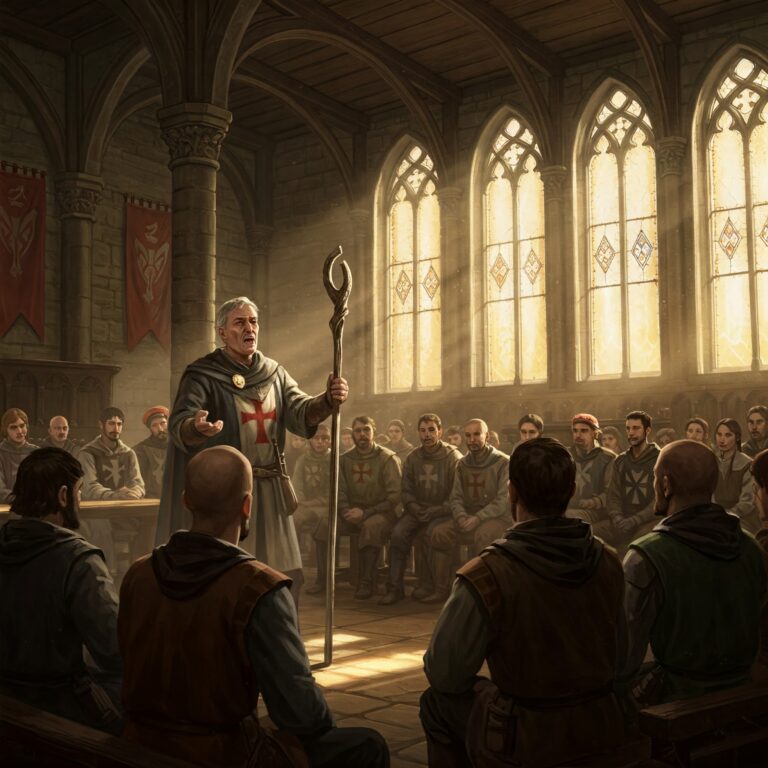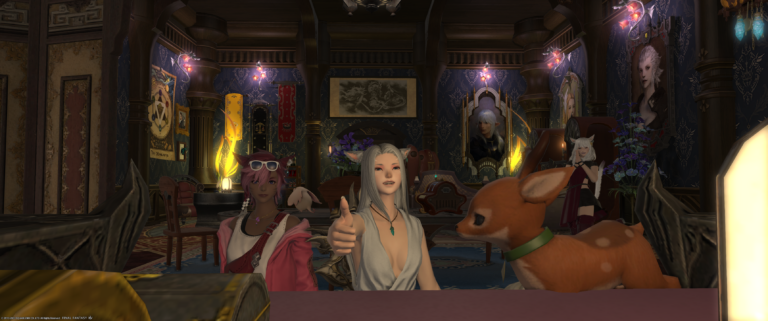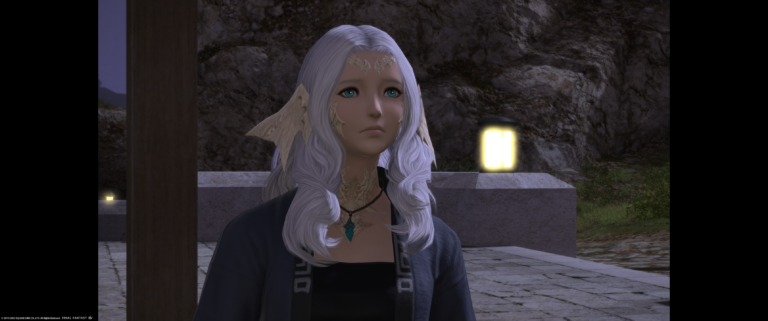
Photo by Kelly Sikkema on Unsplash
Introduction
This article provides you with questions to answer and ideas to consider when drafting your guild’s rules and guidelines. By going through this 12-step process, you will successfully prepare your guild’s rules and guidelines with confidence that you thoroughly thought about every scenario out there. For more information, read this other article on why you should have rules, how to enforce them, and how to talk to your members about them.
Step 1: Establishing Behavioral Expectations
Do you want the guild chat to have crude adult humor? Or would you prefer to have a chatlog that your grandma can read? Banning offensive humor can be more inclusive for recruitment, but it comes at the loss of your other members being able to be themselves.

Photo by Anthony Tran on Unsplash
Impact of Banning Certain Topics
Rules and guidelines help reduce conflict. Banning certain controversial topics could aid in this goal. For example, you can ban political or religious discussion. If you wish to maintain free speech, then you can create guidelines to be respectful when discussing sensitive topics and make it a requirement for the conversation to end if a moderator and certain members agree that the conversation is becoming unproductive.
It is likely a good idea and probably buried in the terms of service of your chosen MMORPG that words of hatred such as racism or sexism should be forbidden. Deciding to ban swear words will have a big impact on your community culture so consider if all or some should be banned. Enforcement of swear words may lead to tension given that stereotypically the gamer culture enjoys the shock value and coolness of controversial words. A person who is swearing or using hate speech may double down and retaliate if confronted. It may be wise to pick your battles if you are concerned about membership retention.
Age Requirements
It seems that it is acceptable for society to ban members below 18 or 21. This is also likely necessary if your guild is okay with not-safe-for-work (NSFW) material. It would be inappropriate to ban an age group in the upper range (such as 40+) or even the middle range (20-40). If you wish to create a dominating culture that reflects a certain age range, you can highlight that it is designed for your chosen age range rather than outright banning certain groups. You may be surprised to find younger gamers more mature than their age suggests or older gamers who have a younger energetic spirit than most would assume.

Photo by Bernard Hermant on Unsplash
Consider a “Catch-All” Rule
Strategic ambiguity prevents members from cleverly breaking the rules because it is not explicitly listed. Having a catch-all rule like “be respectful” allows moderators or guild officers to justify their enforcement with the catch-all rule.

Photo by Mika Baumeister on Unsplash
Step 2: Leveraging the Guild for Game Mechanics
Are you leveraging the guild to participate or gain an advantage in game content? Another way to ask this question is if the guild is strictly social or not.
Social or Strategic?
If the purpose of the guild is to gain an advantage or be able to participate in the game’s mechanics, it is important to highlight this feature.
For example, in Black Desert Online, if you want to do guild-related player versus player (PvP) content, you may need to make a few rules. One would be their required participation in Node Wars (the guild versus guild activity) and having a certain gear score requirement to maintain a competitive edge.
In Final Fantasy XIV, perhaps you give a lot of perks to members such as a monthly gil bonus in exchange for crafting certain items. Then you would need to require for the next recruitment that players have their crafting classes leveled up. Maybe your guild or free company only enters duties/instanced dungeons with your fellow members but nobody wants to play tank. Then your next recruitment requirement would be for the person to be a tank main.
Have Clear Expectations for Participation
Creating these character stats and participation requirements makes it clear what your expectations are for tackling game content together.
Step 3: Scheduling and Online Availability
Maybe you want a guild that is also a static, which requires scheduled availability to practice the raid. Then open communication about time zones and real life (IRL) responsibilities may be needed.
Consider Time Commitments and Scheduling for Guild Activities
Maybe you work a late night shift or are from a different region than the one you play in so you are on at odd hours. Maybe you work a full-time job and can only play on the weekends. If there is no requirement to meet at certain times, then rather than having a strict rule, advertising the majority’s online time may be a helpful guideline.

Photo by Lukas Blazek on Unsplash
Step 4: Create a Sense of Ownership to Maintain the Guild’s Reputation
Guild reputation is somewhat important in MMORPGs as it determines:
- If other guilds want to collaborate with you
- If longtime players want to join your guild
- If someone wants to even communicate with you at all when your guild tag is attached to your in-game name
- If you will be player killed (PK’d) in the open world
- If you will be welcome to attend role-playing (RP) venues

Photo by Prateek Katyal on Unsplash
When you add members to your guild, the guild’s reputation is no longer in your control. But, you can use rules and regulations to help promote an environment where members will maintain the reputation you want the guild to have.
For example, you can create an explicit rule for guild members not to represent the guild inappropriately or act on behalf of the guild in any way. Making this point explicit will allow members to be mindful of what it means to be part of your guild, similar to when an employee wears the uniform of their job.
Step 5: Encourage Open Communication between Officers and Members
Some guilds are okay with members joining and not talking with anybody at all because increasing the member count is beneficial in itself due to the game’s guild mechanic or simply for clout. But if you need guild members to communicate, consider requiring members to let the guild leadership know if they will be taking an extended break. That way you won’t be wondering if you can remove them from the Black Desert Online guild payroll or if you need to remove retired members to make space for new active players.
Define Points of Contact for Specific Issues

Photo by kaleb tapp on Unsplash
Throughout your rules and guidelines, you can provide points of contact when members want to talk about a certain aspect of it. This can be done by attaching an officer’s name or providing information on how a member can find out who is an officer or guild leader.
Also, provide the communication platform that the member should use such as a direct message on Discord or a whisper in-game. This is especially important if you want to avoid conflict or drama being publicly posted for everyone to see.
Step 6: Handling Romance and Adult NSFW Content
In games like Final Fantasy XIV, players sometimes push boundaries to explore intimacy and unspoken desires. From people whispering to you if you want to virtually hook up to seeing “naked” characters publicly dancing in the town square of Limsa Lomina, you are bound to encounter this aspect of the community at some point in your journey.
Discuss the Guild’s Stance on Dating, Hook-Ups, and Sexual Content
The question for you then is if you want your guild to be a hub that will provide a safe space for such activity or ban it. Clear guidelines create an opportunity for members and leadership to be mindful of their actions and how they may affect guild harmony. Guilds can and have collapsed based on unwanted advances, love triangles, and messy breakups. It is important to not have the guild’s existence be contingent upon the success of a romantic or sexual relationship between members, including leadership.

Photo by Mike Dorner on Unsplash
Offer Options for Managing NSFW Content within the Guild
In FFXIV some guilds operate as role-playing venues from nightclubs to bath houses that sell services for the game’s virtual currency (gil). Some communities enjoy NSFW g-posing or taking part in the art of posing with your character nude or performing intimate acts.
In some Discord servers, these images are shared for the guild members to enjoy. Some guilds may choose to outright ban such behavior or openly accept it.
There is also a middle-of-the-road option where you can allow members to select a Discord role that allows them to opt into NSFW content. A rule that could be enforced is to only allow NSFW solicitations if one elects to a dedicated server role that is okay with it.
Consider Guidelines on NSFW Mods
Mods are third-party adjustments made to the base game’s code to add personalization or quality-of-life improvements. Mods are forbidden in most games and explicitly not allowed in FFXIV. In Final Fantasy, mods, particularly fashion and combat animation replacement are still commonly used.
These two forms of mods are shareable and viewable by other members impacting their gaming experience. Some free companies have a shared group network so players can view each other’s modded characters without explicit consent from each participant.
This increases the risk of encountering NSFW mods, obnoxious mods (loud sounds or bright flashes), and mods that can cause lag affecting your performance in raids.
Creating rules and guidelines for mods can help alleviate some of these issues. For example, requesting NSFW mods to be kept at a minimum or forbidden when hanging out with fellow free company members.
Step 7: Privacy and Security: Protect Members’ Personal Information
You might encounter members who have trouble saying no or speaking up when they are uncomfortable. Let these members know their “virtual rights” by creating rules that prevent the sharing or gathering of personal information (such as real names, where people live, phone numbers, or social media accounts), forbidding direct messaging, or banning direct Discord calls and video chats.
Educate Members On Online Privacy Practices
For players new to online privacy, educate these members on the ability to create fake social media profiles for their online character if they wish to stay in touch with other guild members. By creating these rules, you also help disassociate guild liability from such negative interactions.

Photo by Jason Dent on Unsplash
Step 8: Dealing with Drama: Zero-Tolerance or In-Between?
As guild leadership, sometimes it will be difficult to let go of members who have been by your side for a long time and dedicated a lot of effort to your guild’s cause. However, leniency on the rules diminishes the power and respect your members will have for it. By having zero tolerance for drama, you can spend less time worrying about poor behavior and more time focusing on the content you and your guildmates can do.
If you still want to be forgiving and have some leniency, consider a two or three-strikes rule where the member is kicked out of the guild if they disobey two or three rules. Be sure to document the behavior and share this information with the offending member so they are aware they are doing something wrong. Consider providing explicit advice on actions they could have taken to avoid such situations.

Drama Dragon Photo by Dinu J Nair on Unsplash
Step 9: Inclusivity and Accommodations
Most members will be fine with the safe space you create and feel welcomed. But some members can be more demanding than others. It is a balancing act to know when spending the effort to create an inclusive environment for a certain situation is beneficial or more work than it needs to be.
Some inclusivity complaints could include:
- Wanting to be more strict on NSFW content
- Wanting to lower the age minimum so a member’s kid could play
- Wanting to require preferred gender pronouns on Discord
- Wanting a text-to-speech software or Discord bot for those unable to use voice
- Wanting to ban insensitive race jokes
- Wanting to ban sexist jokes and behavior

Balancing Inclusivity Efforts with Practicality
Being overly inclusive when none of the members need such accommodations can get in the way of planning actual relevant events for your guildmates. Remember that your guild is designed to find like-minded people where members can be themselves. But also be aware that diversity can be a strength and expand your worldview possibly making your guild community better than it ever has been.
Step 10: Managing Communal Spaces and Resources
You may have shared guild resources like funds, storage, quests, or transportation. Creating rules and guidelines on the usage of these materials can help ensure resources do not suddenly disappear or the guild storage doesn’t get stuffed with trash loot. If your MMORPG of choice has the option to, consider locking some of these features behind member ranks. This way, guild members can gain access to more features as they spend more time with the guild and you can make the judgment call as to whether they are trustworthy or not.

Consider Rank-Based Access to Certain Features
If you want to be extra safe, only allow access to these shared resources with your officers and have lower-ranked members ask for permission. The absolute safest way to protect such resources is to only allow the guild leader permission to access the resources, but it decreases a sense of ownership for guildmembers and may make them feel untrustworthy.
Be Mindful When Reducing Member Access
Perhaps you have guild housing and want to use a part of the house for officer meetings but members are already hanging out there. Asking them to leave may create friction if the shared space is for everyone but higher-ranked members can kick people out.
This can be avoided by using a private channel on Discord. If game immersion is important, on FFXIV, one player or an alt character can dedicate a private chamber for officer meetings and have the room locked until it is time to host the meeting. If such a feature is not available in your MMORPG, then outlining that officers might book the space for meetings in the guidelines will help ease misunderstandings.
Step 11: Checks and Balances
Rules and guidelines are often written for the members and the enforcer’s responsibility usually ends with you. But what if you are the rule offender? When you make a guild and other members join, they also begin to feel ownership of the organization–especially officers who put in additional work because they believe in the mission statement of your guild.

Photo by Tingey Injury Law Firm on Unsplash
Ensure Accountability within Guild Leadership
Having checks and balances will instill confidence in your members that should something happen to you, there are contingencies in place to keep the guild running smoothly. This can make prospective members more okay with participating and making the guild a better place.
To have checks and balances, answer the following:
- Who can members talk to if they feel uncomfortable about me?
- Who and what can people do should I, the guild leader, need to be kicked out or reprimanded?
- Do members know that they can speak to someone else if a guild officer or moderator makes them feel uncomfortable?
Provide Contingency Plans for Leadership Changes
Having backup plans for when something happens to you or a critical member of the guild will keep things running smoothly and reduce drama.
Answer the following questions about leadership transitions to improve guild resiliency:
- How can we keep the guild running should I, the guild leader, suddenly disappear?
- How can we split shared resources so no single person has complete control of the guild’s armory?

Photo by Ricardo Cruz on Unsplash
Be Mindful of Playing Favorites
Playing favorites can discourage members, especially shy ones, from wanting to participate. It can also create a cliquey vibe that makes it difficult for members to feel like they can fit in. Having more democratic and transparent methods when giving power to members can reduce these negative feelings.
How are officers decided? Who gets the best room in the guild? Who gets to decorate the house or make decisions in the guild? Are there members who may be interested but are scared to speak up? If you find yourself giving these roles to people you naturally gravitate towards, consider reaching out to members you do not frequently talk to or open up a voting process for these perks.
Voting Rights
Having a democratic and transparent process can make guild members feel desired and they may begin to take ownership of the guild. There are many ways to create a democratic voting process. Check out this upcoming article for more information.
Sometimes members just want things to be taken care of and do not want to vote on things. It is a balancing act on how democratic your guild should be. Being overly democratic may cause members to feel that leadership is trying to dump their responsibilities on them. However not providing enough voting opportunities may make members feel like their opinion does not matter so they do not need to participate in guild planning activities.

Photo by Arisa Chattasa on Unsplash
Step 12: Avoiding Rules Overload
Having a lot of rules and guidelines shows careful consideration of many scenarios, but it can also come across as if you are a difficult person to work with. People don’t like “gotcha” situations where they would be scolded for disobeying a rule in paragraph 5 line 4 page 76 of the guild’s bylaws. Try reviewing your rules and make things more succinct. Also, consider revising your rules and guidelines to be more conversational.
Conclusion
To wrap up, the key to a successful gaming guild lies in the artful crafting of rules that strike a balance between structure and flexibility. From defining behavior to managing communal spaces, each aspect contributes to the vibrant tapestry of your guild’s identity.
When drafting these rules, try to be forward-thinking and be excited about the outcome.
Imagine a community where inclusivity isn’t just a word but a thriving reality, where every member contributes to the guild’s success while being themselves.
Envision a space where rules aren’t restrictions but a guide to creating a dynamic and drama-free gaming haven.

© virtosmedia, 123RF Free Images
In this ever-evolving world of MMORPGs, your guild isn’t just a guild—it’s a living, breathing community. So, embrace the challenge, curate your rules with finesse, and watch as your guild becomes a beacon in the virtual realms, where adventure and camaraderie intertwine.
The journey has just begun, and the possibilities are as limitless as the digital landscapes you explore together. Let the excitement of this gaming odyssey fuel your guild’s rise to greatness!

Photo by Christine Jou on Unsplash




